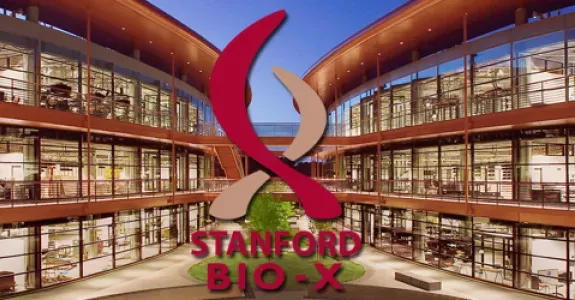
Welcome to the biweekly electronic newsletter from Stanford Bio-X for members of the Bio-X Corporate Forum. Please contact Dr. Hanwei Li, the Bio-X Corporate Forum Liaison if you would like to be added or removed from this distribution list, or if you have any questions about Stanford Bio-X or Stanford University.
Highlights
** On October 9, 2013, Bio-X celebrated the 10th Anniversary of the James H. Clark Center, the hub of Bio-X. Check out CLARK CENTER @ 10X as well as the Bio-X Timeline over the last 15 years!!
** Check out the article by Stanford President John Hennessy in the Nov/Dec 2013 issue of the Stanford Magazine on Bio-X and the Clark Center, "A Cauldron of Innovation".
Bio-X Core Programs
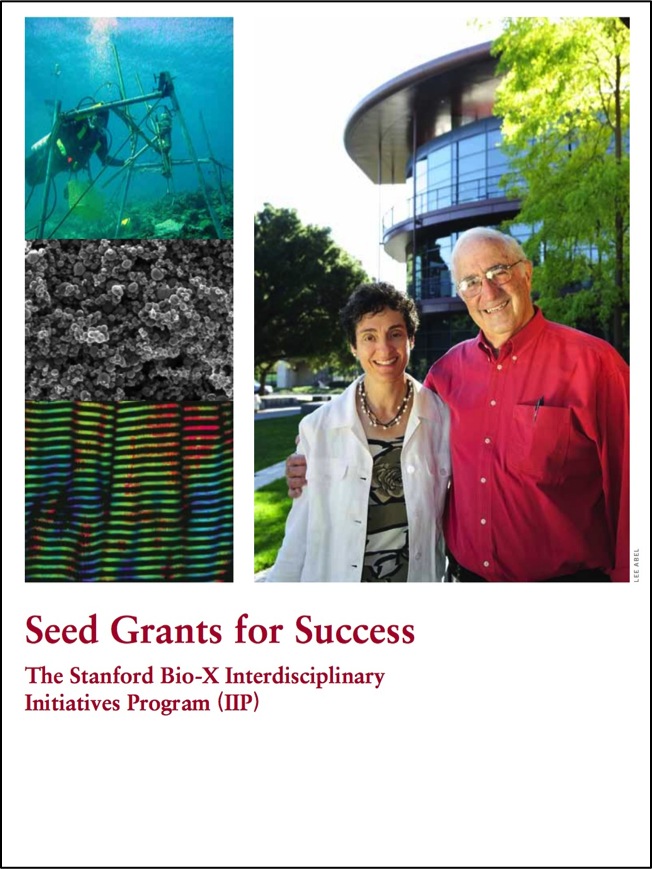 SEED GRANTS FOR SUCCESS - Stanford Bio-X Interdisciplinary Initiatives Program (IIP) SEED GRANTS FOR SUCCESS - Stanford Bio-X Interdisciplinary Initiatives Program (IIP)The Bio-X Interdisciplinary Initiatives Program represents a key Stanford Initiative to address challenges in human health. Currently, the IIP awards approximately $4 million every other year in the form of two-year grants averaging about $200,000 each. From its inception in 2000 through the beginning of the seventh round in 2014, the program has provided critical early-stage funding to 164 different interdisciplinary projects, involving collaborations from over 750 faculty members, and creating over 700 teams from six different Stanford schools. From just the first 6 rounds, the IIP awards have resulted in a 10-fold-plus return on investment, as well as hundreds of publications, dozens of patents filed, and most importantly, the acceleration of scientific discovery and innovation. 2014 is the start of the 7th round of the Bio-X IIP Seed Grants Program, and 22 newly awarded projects were selected from 142 Letters of Intent (LOIs)! This has been the largest number of LOIs that Bio-X has received. Please go here to check out the newly awarded projects. Competition was intense, and the selection criteria included innovation, high-reward, and new interdisciplinary collaborations. (To view the 142 other IIP projects that have been funded from the previous 6 rounds, please click here.) |
 Bio-X FELLOWSHIPS Bio-X FELLOWSHIPSEvery year, graduate students and postdoctoral scholars of Bio-X affiliated faculty are highly encouraged to apply for the Bio-X Fellowships, which are awarded to research projects that are interdisciplinary and utilize the technologies of different fields to solve different biological questions. Students are encouraged to work collaboratively with professors of different departments, thus creating cross-disciplinary relationships among the different Stanford schools. Our fellows have conducted exciting research, resulting in publications in high-impact journals and have been offered excellent positions in industry and academia. To date, with the 19 new awardees of 2014, Stanford Bio-X has a total of 173 Fellows. The winners of the 2015 PhD Fellowship program will be announced later on this year. You can view the numerous Fellowship projects that have been awarded over the years as well as oral presentations from previous symposiums here. |
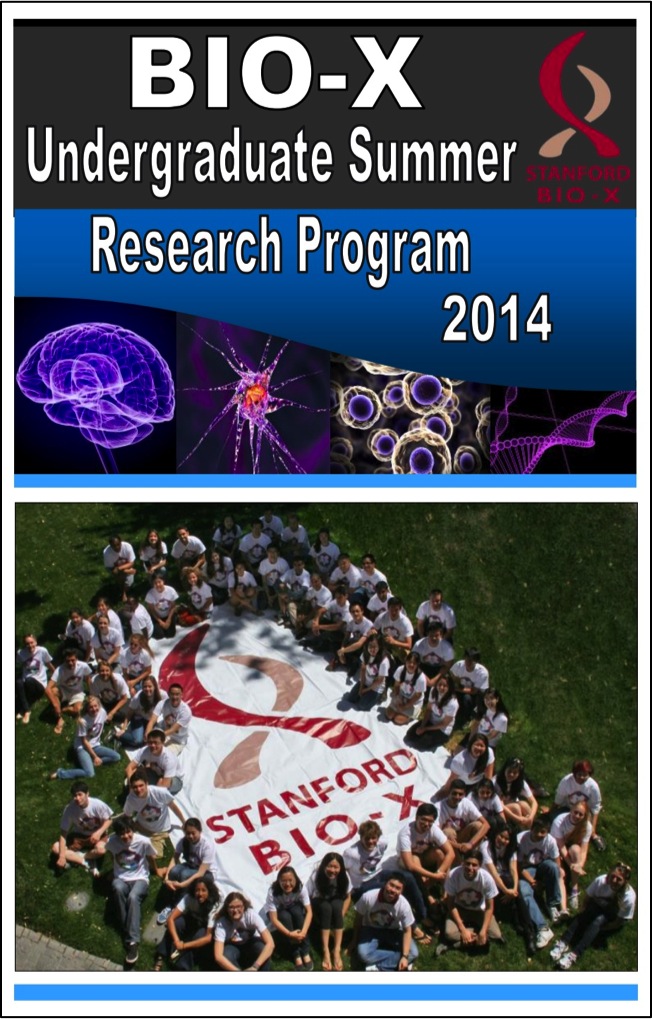 Bio-X UNDERGRADUATE SUMMER RESEARCH PROGRAM Bio-X UNDERGRADUATE SUMMER RESEARCH PROGRAMThe Bio-X Undergraduate Summer Research Program supports undergraduate research training through an award designed to support interdisciplinary undergraduate summer research projects. The program is an invaluable opportunity for students to conduct hands-on research, learn how to carry out experiments in the laboratory, and develop the skills to read and analyze scientific literature. This program is eligible to Stanford students who want to work in the labs of Bio-X affiliated faculty. To date, with 65 new awardees from the 154 applications submitted in 2014, 306 students have been awarded the opportunity to participate in the Bio-X Undergraduate Summer Research Program. The winners of the 2015 USRP will be starting their program very soon! Participating undergraduates are also required to present poster presentations on the research that they've conducted during the program. Please click here for title lists of past posters that our undergraduates have presented. |
We are cultivating and are highly successful in building meaningful collaborations with numerous corporate colleagues. New collaborations through our core programs are highly encouraged. To learn about how to get involved, please contact Dr. Hanwei Li, or Dr. Heideh Fattaey.
Bio-X also holds symposiums every year that highlight our core programs. The latest one was on February 25, 2015, where over 300 people attended Bio-X's latest Interdisciplinary Initiatives Seed Grants Program Symposium. There were 8 different oral presentations from faculty members who were awarded Bio-X Seed Grants on the progress that they have made with the funding towards their projects, as well as a packed poster session with 100+ research projects presented. Please stay tuned for future Bio-X symposiums that are coming up this year!
If you'd like to learn more about any of the projects that were presented during the entire symposium, please contact Dr. Hanwei Li with your questions.
News
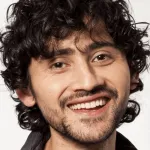 Just add water: Stanford engineers develop a computer that operates on water droplets
Just add water: Stanford engineers develop a computer that operates on water droplets
Bio-X Affiliated Faculty Manu Prakash
Computers and water typically don't mix, but in Manu Prakash's lab, the two are one and the same. Prakash, an assistant professor of bioengineering at Stanford, and his students have built a synchronous computer that operates using the unique physics of moving water droplets. The computer is nearly a decade in the making, incubated from an idea that struck Prakash when he was a graduate student. The work combines his expertise in manipulating droplet fluid dynamics with a fundamental element of computer science – an operating clock. "In this work, we finally demonstrate a synchronous, universal droplet logic and control," Prakash said. Because of its universal nature, the droplet computer can theoretically perform any operation that a conventional electronic computer can crunch, although at significantly slower rates. Prakash and his colleagues, however, have a more ambitious application in mind. "We already have digital computers to process information. Our goal is not to compete with electronic computers or to operate word processors on this," Prakash said. "Our goal is to build a completely new class of computers that can precisely control and manipulate physical matter. Imagine if when you run a set of computations that not only information is processed but physical matter is algorithmically manipulated as well. We have just made this possible at the mesoscale." The ability to precisely control droplets using fluidic computation could have a number of applications in high-throughput biology and chemistry, and possibly new applications in scalable digital manufacturing. The results are published in the current edition of Nature Physics.
 Stanford scientists show fMRI memory detectors can be easily fooled
Stanford scientists show fMRI memory detectors can be easily fooled
Bio-X Affiliated Faculty Anthony Wagner
For the past several years, Anthony Wagner has been developing a computer program that can read a person's brain scan data and surmise, with a high degree of certainty, whether that person is experiencing a memory. The technology has great promise to influence a number of fields, including marketing, medicine and evaluation of eyewitness testimony. Now, Wagner, a professor of psychology and neuroscience at Stanford, and his colleagues have shown that with just a little bit of coaching and concentration, subjects are easily able to obscure real memories, or even create fibs that look like real memories, on brain scans. The work both confirms the power of the technology when applied to cooperative subjects and underscores the need for more research before applying the science to high-stakes situations. The results are published in the current issue of the Journal of Neuroscience. The act of creating, storing, recalling and replaying a memory is a marvelously complex multi-process biological event. First, the stimulus (a person, an event, etc.) must be sensed, interpreted and stored, each step occurring within different brain structures. Recalling the memory relies on yet another set of neural mechanisms to find the distributed information that constitutes an event memory, reassemble it into a full "story," and then replay it in the mind. Although the process is complex, the fact that different parts of the brain play distinct roles in memory allows neuroscientists like Wagner to pair brain activity signals with machine learning pattern analyses to detect complex patterns that signal whether a person is remembering a target stimulus or perceiving it as novel.
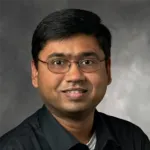
Some heartburn drugs may boost risk of heart attack, study finds
Bio-X Affiliated Faculty Nigam Shah
Vascular Surgery and Cardiovascular Medicine Faculty Nicholas Leeper
A large data-mining study carried out by investigators at the Stanford University School of Medicine has linked a popular class of heartburn drugs to an elevated risk of heart attack. Proton-pump inhibitors, or PPIs, are among the world’s most widely prescribed drugs, with $14 billion in annual sales. They are effective at lowering the acidity of the stomach, in turn preventing heartburn, a burning sensation in the chest that occurs when stomach acid rises up into the esophagus. In any given year, more than 20 million Americans — about one in every 14 — use PPIs such as omeprazole (trade name Prilosec) for heartburn, also known as acid reflux or gastroesophageal reflux disease. “The association we found with PPI use and increased chances of a subsequent heart attack doesn’t in and of itself prove causation,” said the study’s lead author, Nigam Shah, PhD, MBBS, an assistant professor of biomedical informatics and assistant director of the Stanford Center for Biomedical Informatics Research. But, he said, the study combed through electronic health records of nearly 3 million people and crunched trillions of pieces of medical data, raising concerns that should be taken seriously, especially now that PPIs are available over the counter. More than 100 million prescriptions are filled every year in the United States for PPIs, a class of drugs long considered benign except for people concurrently taking the blood thinner clopidogrel (Plavix). However, the new study upends this view: It indicates that PPI use was associated with a roughly 20 percent increase in the rate of subsequent heart-attack risk among all adult PPI users, even when excluding those also taking clopidogrel. A paper describing the findings was published June 10 in PLOS ONE.
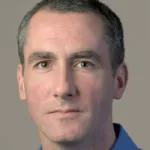 Scientists find genetic underpinnings of functional brain networks seen in imaging studies
Scientists find genetic underpinnings of functional brain networks seen in imaging studies
Bio-X Affiliated Faculty Michael Greicius
A new study by researchers at the Stanford University School of Medicine found that synchronized physiological interactions between remote brain regions have genetic underpinnings. The research was performed at Stanford but was made possible by collaborations with the Seattle-based Allen Institute for Brain Science and the IMAGEN Consortium, a multicenter European project, said the study’s senior author, Michael Greicius, MD, an associate professor of neurology and neurological sciences. The study was published June 11 in Science. An emerging consensus among neuroscientists is that cognitive operations are performed not by individual brain regions working in isolation, but by networks consisting of several discrete brain regions — anatomically connected either directly via white-matter tracts or indirectly through intermediary nodes — that share “functional connectivity,” meaning that activity in these regions is tightly coupled. Any given functional network is normally most active during the performance of the task associated with that network, as in the case of autobiographical memory (“What did I eat for dinner last night?”). But the synchronous activity of component regions persists when networks are idling. Well over a dozen functional networks have been identified via a technique called resting-state functional magnetic resonance imaging, said Greicius, who is the medical director of the Stanford Center for Memory Disorders. In resting-state fMRI scans, the individual is asked to simply lie still and relax for several minutes. The results of these scans indicate that even at rest, the brain’s functional networks continue to hum along at their own distinguishable frequencies and phases, like different radio stations playing simultaneously, but quietly, on the same radio.
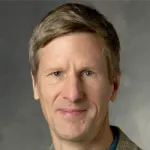 Grippy not sticky: Stanford engineers debut an incredibly adhesive material that doesn't get stuck
Grippy not sticky: Stanford engineers debut an incredibly adhesive material that doesn't get stuck
Bio-X Affiliated Faculty Mark Cutkosky
A promising new adhesive material was born out of a scrap. David Christensen, a mechanical engineering graduate student at Stanford, was trimming a piece of adhesive modeled after the grippy fingers of geckos, and noticed that the thin scrap seemed particularly grippy. He shared this observation with his colleague Elliot Hawkes, who laminated a piece of non-stretchable, but very flexible, film to the back of the scrap. They found that the combination greatly magnified the grip, and also allowed some surprising properties. "The first time we played with the composite, it was clear the material grabbed onto textures that we were never able to grip before, but doesn't remain stuck," said Christensen, who is advised by Mark Cutkosky, a professor of mechanical engineering. They shared the material with a fellow graduate student, Hao Jiang, and they immediately realized that its ability to grip tightly to any textured surface, yet also release without effort, would make it ideal for a robotic grabber they were working on.
Events
| Biochemistry June 17, 2015, 4 pm - 5 pm Munzer Auditorium, Stanford, CA Frontiers in Biology: How do proteins evolve? Speaker: Daniel Tawfik, Weizmann Institute |
Bio-X July 16, 2015, 12 pm - 1 pm Clark Center Auditorium, Stanford, CA Stanford Bio-X Seminar: "How Experience Changes Synapses in the Mammalian Brain" Speaker: Tobias Bonhoeffer, PhD, Stanford, Max Planck Institute, University in Munich |
Resources
| Stanford University |
| Stanford Bio-X |
| Bio-X Seed Grants The Stanford Bio-X Interdisciplinary Initiatives Program (IIP) provides seed funding for high-risk, high-reward, collaborative projects across the university, and have been highly successful in fostering transformative research. |
| Office of Technology and Licensing "Techfinder" Search the OTL Technology Portal to find technologies available for licensing from Stanford. |
| Stanford Center for Professional Development - Take advantage of your FREE membership! - Take online graduate courses in engineering, leadership and management, bioscience, and more. - Register for free webinars and seminars, and gets discounts on courses. |
| Stanford Biodesign Video Tutorials on how FDA approves medical devices A series of video briefs recently produced by the Stanford Biodesign Program teaches innovators how to get a medical device approved for use in the United States. This free, online library of 60 videos provides detailed information on the Food and Drug Administration regulatory process, short case studies and advice on interacting with the FDA. |
To learn more about Stanford Bio-X or Stanford University, please contact Dr. Hanwei Li, the Bio-X Corporate Forum Liaison, at 650-725-1523 or lhanwei1@stanford.edu, or Dr. Heideh Fattaey, the Executive Director of Bio-X Operations and Programs, at 650-799-1608 or hfattaey@stanford.edu.
